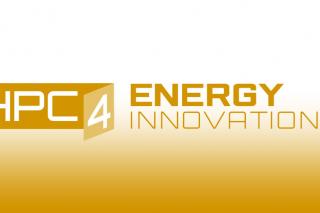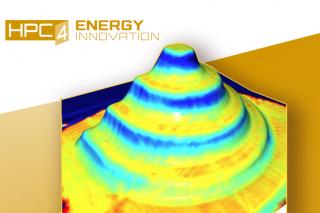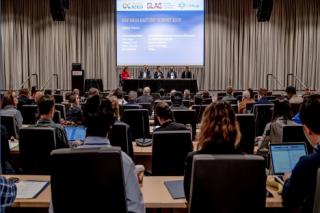Advancing our nation's security by innovating science and technology solutions to improve national energy security and surety while reducing environmental impact
Laboratory scientists and engineers are working nonstop to identify key elements, opportunities and challenges in an evolving energy landscape. This landscape includes:
- Increasing mandated reductions of greenhouse gases, which are causing the mix of energy sources to change rapidly.
- Adding significant amounts of intermittent renewable energy and loads, which creates new challenges in economics and in maintaining a reliable electric grid.
- Adapting Smart Grid technologies, which can help stabilize the electric grid in this new environment but which also brings problems such as cyber threats.
- Determining if unconventional oil and gas can be exploited in an environmentally sensitive manner.
Lawrence Livermore applies high-performance computing to solve challenges like these. But it's not just big computers that solve challenges; it's the people and the ecosystem surrounding those computers. Researchers start with a detailed understanding of the basic science, develop algorithms to explain that science, and turn these algorithms into simulations that run on the Laboratory's big computers. They validate these simulations with observations and experiments using state-of-the-art tools and multidisciplinary expertise. By leveraging these capabilities the Lab is able to produce innovative solutions, including:
- Technologies that enable expanded use of renewable energy, improved efficiency, new resources, systems integration, and reduced costs.
- Science, technology, and operational protocols that increase the use of the nation's large and secure reserves of conventional and unconventional fossil fuels while safely eliminating carbon dioxide emissions through innovations in carbon capture and long-term geologic sequestration.
Lawrence Livermore's goals are to provide science and technology solutions to:
- Secure Energy—Increase security and supply of U.S. energy resources, while minimizing environmental impacts and reducing costs.
- Reliable Delivery—Ensure secure, safe, and reliable delivery of U.S. energy resources across transmission and distribution networks.
- Climate Resilience—Predict and understand climate change security challenges and develop solutions for future adaptation.
Featured Capabilities
- Unconventional Oil and Gas
- Renewable and Sustainable Energy
- Advanced Vehicle Technologies
- Materials for Energy
- Energy Security
- Energy Systems Analysis
- Nuclear Energy
Energy Flow Charts: Charting the Complex Relationships Among Energy, Water, and Carbon
- Toolset Promotes Carbon-Capture Solution
- Computational Innovation Boosts Manufacturing
- Facility Drives Hydrogen Vehicle Innovations
- Improving Engine Designs with an Ultrafast Code
- Tiny Capsules Trap Big Climate Menace
- Biofuel Breakthrough with Engineered Bacteria
- The Rise of the SuperTruck
- Diving into the Dynamics of Evolving Hydrogen
- Energy Applications Drive Carbon Aerogel Innovation
- Predicting Wind Power With Greater Accuracy
- Tiny But Mighty Potential Allies in the Toxic Metal Cleanup Effort
- Nuclear Fusion Through a Computational Microscope
- Fuel Research Provides Insights Into Basic Actinide Science








